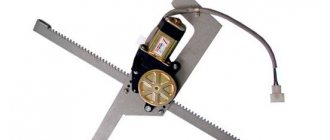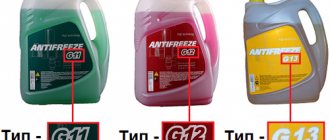In a car engine, every detail is important and requires special attention. The timing belt is one such part. Considering that this rubber product is subjected to colossal loads in harsh temperature conditions and in an aggressive environment, you understand what the quality of production should be. This is why most people prefer Gates timing belts.
This article will discuss the types and differences of Gates products (timing belts), tips for identifying counterfeit products, reviews, applicability and selection tips. And in order to make everything completely clear, a little information about the timing belt itself.
What is a timing belt
The main function of the timing belt, or timing belt, is to synchronize the operation of the engine's crankshaft and camshaft. In diesel units it is also connected to the high pressure fuel pump (HPF). Previously, in engines this role was performed by a chain. Today there is also a significant proportion of cars with chain synchronization. Why did the belt begin to be used in such a critical place in the engine?
To make it clearer, let’s look at the main differences between a belt and a chain in an engine timing belt:
- a timing belt system produces less noise;
- significant reduction in weight compared to a chain;
- reduction in the cost of repairs for components and labor;
- The structure of the timing belt itself is simpler;
- The belt should be replaced at least every 60,000 km under normal conditions. In harsh operating conditions, these periods are even lower.
The timing belt is an important component of the engine in terms of repairability in the event of a break. The consequences of failure of such a belt will, at best, lead to the replacement of part of the valves. In the worst case, all valves, pistons, camshaft and crankshaft will need to be replaced. The responsibility on a rubber product lies simply enormous. Therefore, it is best to replace it regularly and choose among the products of the most responsible manufacturers. And Gates (timing belts and other products) constantly deserves the best reviews.
What are the consequences of untimely replacement?
Questionable savings on the purchase of consumables for the timing mechanism can lead to significant costs for the restoration of the power unit. On the Lada Priora, the cylinder head has 16 valves, 4 for each working cylinder. If for some reason there is a mismatch in the operation of the timing belt and the crank mechanism, there will inevitably be a “meeting” of pistons and valves. In the best case, you will have to replace the damaged valve, but there can be more significant damage to the engine.
Check and replace worn timing drive parts in a timely manner; the machine will delight you for a long time with the flawless operation of the power unit.
Source
Features of Gates timing belts
Gates has a century-long history of development. In 2022, it will be 100 years since the first V-belt rolled off the production line. The company survived such a long period of time for a reason. Just having our own research center speaks volumes. Today it is the largest supplier of belts for cars and agricultural machinery, not only for conveyors, but also for spare parts.
When it comes to timing belts specifically, Gates offers products with strict requirements for quality and reliability. After all, timing belts operate at high speeds over a wide temperature range, while being exposed to oil. So, the features of Gates timing belts include:
- the use of nitrile in a synthetic material with increased wear resistance and protection against oil and aggressive environments;
- the use of fiberglass in the cord, spirally placed inside a rubber shell;
- a variety of tooth profiles that precisely align with the gears and ensure tight grip and silent operation;
- the availability of a variety of repair kits, including not only a tension roller, but also a special tool, and additional spare parts necessary for replacement, for example, pumps;
- good protection of products from counterfeiting.
About the belt PRIOR, KALINA, GRANTS
Okay, with foreign cars we understand that if you install original belts, you can ride for at least 100,000 km, but what about our cars?
Everything is not so charming here. The belts on our VAZs also last a long time, but the rollers are just some kind of scourge, personally, on a working VAZ 2111, we changed the timing belt - probably every 30,000, the rollers didn’t run anymore, they just “stuck”! True, they took “non-originals”, after the last time we stopped by the VAZ dealer, he installed his own belt, which is installed on the conveyor belt (his words). It ran for about 45,000 kilometers, but then I quit my job and don’t know the future of the car.
I asked the same guy at the station a question - in general, for our cars, what is the timing life? And this is what he answered me:
The manufacturer assures that 100 – 120,000, supposedly they want to catch up with foreign cars, BUT! IN practice this is not the case, I would personally recommend changing it every 60 - 70,000 km! And install ONLY ORIGINAL SPARE PARTS! Because there are simply a lot of raw spare parts on the Russian market.
And you know, I believe him - I would generally change it after 50,000 if I had a PRIORA. Damn, can’t they really make sane belts and rollers! The question hangs... But it needs to be changed, otherwise there will be a break, and what they say is “you’ll get caught” !
Now I remember how I tested DATSUN ON-DO, the first thing the Japanese changed and added to the design was the timing system! Worth thinking about!
Now there is a useful video, watch it
That's probably all, I think the information was informative, read our AUTOBLOG.
(
14 votes, average: 4.21 out of 5)
Types of timing belts
Considering that Gates produces timing belts for almost all types of cars, their number in the classification becomes clear. The manufacturer has developed detailed selection catalogs. For your car, you can easily and simply find the right timing belt, its reinforced analogue, as well as an installation kit, if necessary.
For passenger cars, Gates offers belts that are completely identical to their original counterparts:
- normal quality;
- enhanced quality;
- complete with roller or rollers;
- in an extended set with sealing elements and all important timing belt-related components.
In addition to belts with a standard tooth for a particular vehicle, there are varieties with teeth in the form of a trapezoid and complex shapes for different operating conditions.
If we consider the general types of Gates belts, the variety of shapes and models is even brighter. In addition to the standard type, designated Power Grip, there are:
- polyurethane belts;
- bilateral options;
- with conveyor type cord;
- resistant to paints and varnishes;
- open timing belts of all the above types.
Test method
Strength tests of belts were carried out in the testing laboratory of PJSC NPO on R-10 and MR-05 tensile testing machines.
Frost resistance and life tests were carried out in the testing laboratory of NPO Talis.
The testing of timing belts was carried out according to TU 38.1051912-90 “Toothed belts with a parabolic tooth profile for VAZ car engines.” The factor of the parabolic profile standard for belts with a rounded profile in this case is not significant, since the tested belts are actually intended for the good old “eight” engine, which means that the forces transmitted by the timing belt remained at the same level.
The first test was to check the bending resistance of the belts. This test uses a smooth pulley with a diameter of 50 mm. One belt of each type undergoes an artificial aging procedure, which is carried out as follows: the belt is placed in a heat chamber with a temperature of 120 degrees and maintained for 70 hours. The other belt is frozen along with the pulley at -45 degrees for 24 hours.
Afterwards, the belts are removed and bent over a smooth pulley with the teeth outward by 180 degrees. Tears and cracks are not allowed in the bend zone. The frozen belt bends on a pulley that was previously cooled along with the belt.
All belts passed this test.
At the next stage, we checked the strength qualities of the belts.
First, the belts were tested for breaking force. According to the standard, the minimum tensile strength of a belt should be at least 8 kN/cm for a new belt and 7 kN/cm for a belt that has undergone artificial aging. Thus, with a belt width of 17 mm, the minimum breaking force should be at least 13,600 N, and for artificially aged belts - at least 11,900 N.
This test is carried out as follows: the belts are installed with the teeth outward on smooth cylindrical pulleys and stretched at a speed of 50 ± 15 mm/min until breaking on a R-10 tensile testing machine.
The breaking force test results are shown in Table 1 .
As can be seen from the test results, all belts have a good margin of cord strength (from 1.43 to 1.8 before aging and from 1.68 to 2.1 after aging). The strongest cord turned out to be the Continental CT 1164 belts: it can withstand loads of up to 2.5 tons.
But in a belt, the strength of the cord is not the most important indicator. Therefore, as a second strength test, the tooth resistance to tearing off of new and artificially aged belts was checked. This figure must be at least 92 kgf for each centimeter of belt width - both new and old. Knowing that the width of the tested belts is 17 mm, we obtain a force of 156.4 kgf.
This test is carried out using a special device that has a toothed pulley with a tooth profile corresponding to the belt being tested. The device contains a calibration spring, which presses the belt through a metal plate to the toothed pulley with the required force, in our case it is 119 N. The belt is cut, one end is installed in the device so that the fifth tooth from the top of the cut belt falls into the pulley socket. The lower end is fixed in the clamp, and the MP-05 tensile testing machine pulls it down.
The results of this test are shown in Table 2 .
On new belts, the teeth did not cut off: the rubber is still plastic, the tooth simply deforms and jumps. But with aged belts, tooth shearing occurs on their “hardened” teeth - this is what happened with the Continental CT 1164 and Trialli GD 790; Gates 5670XS had a tooth deformation and it jumped. The test results show that all belts have a good shear strength (from 1.95 to 2.43 before aging and from 2.1 to 2.51 after aging). The timing belt from Trialli turned out to be the most resistant to tooth shearing.
Some people may find it strange that strength increases after artificial aging. This is explained by the properties of heat-resistant rubbers that are used to make belts: with prolonged heating, their internal bonds are strengthened.
According to statistics, replacing timing belt tension rollers occurs more often than replacing the belt itself. Therefore, it is worth periodically listening to see if there is noise from the rollers, because a failed roller will ruin the timing belt, no matter how good it is, which can lead to expensive engine repairs.
Are there any disadvantages?
Positive reviews from Gates, whose timing belts have a long list of advantages, tell us that there are no product shortcomings. Is it really? The biggest disadvantage of products from a well-known and popular company is the large number of people who want to counterfeit them. And when there are negative reviews among the reviews, then with a 90% probability we are talking about counterfeit products.
The manufacturer's extensive experience in protecting products from counterfeiting allows the consumer to receive their Gates timing belt kit or any other product in proper quality. You can read about ways to protect products on the official website, in bulletins distributed with the product, and in this article.
How to distinguish an original Gates from a fake?
The popularity of a well-known company, together with high quality, and therefore good demand, has always attracted those who want to fake the same Gates timing belt. How to distinguish a fake? There are several ways to determine whether it is an original or a counterfeit, and the process of identifying the truth should be approached systematically.
First of all, you need to pay attention to the packaging. Gates takes this issue very seriously. All timing belts are packed in cardboard packaging. If the product is not packaged, it is 100% fake. Only recyclable cardboard is used and the paint is solvent-free. That is, the cardboard should not be covered with a bright glossy picture. Information about the application and article number of the timing belt is made in the form of an adhesive label, and is not printed on the packaging.
The holographic sticker or Holospot from Gates has complex protection in the form of multi-layers, a special code and the actual holographic inscription. Also, the original packaging must contain a sticker to record the mileage at the time of replacement. Counterfeiting a Gates timing belt in such conditions becomes much more difficult.
The next point to pay attention to will be the markings on the belt itself. At the factory, this information is printed in white, hard to erase color. Here, too, there are three points that may indicate counterfeit:
- the country of origin must be specified;
- five-digit number identical throughout the belt;
- the numbers on the right edge of the marking should go up in increasing order.
Price: 800 rubles
The belt is in branded cardboard packaging, on the box there is a sticker with a QR code. The kit includes a sticker that indicates the date of replacement and mileage, as well as which of the components - roller, belt, pump - were replaced. This is convenient: you won’t have to struggle to remember when the last belt replacement was made and what exactly was replaced. In addition to branded and general designations, the belt is marked with a batch number.
The appeal of Gates timing belts
It's time to figure out why the reviews are so good. Gates (timing belts) creates products with many advantages, including:
- high wear resistance;
- production of the entire required period with a reserve in conditions of an aggressive environment and large temperature ranges;
- silent operation, thanks to precise selection of teeth and soft material;
- colossal tensile strength due to the fiberglass in the cord.
Fiberglass, which is used in the cord of timing belts, on the one hand, increases stability and tensile strength. But there is a downside, or rather a disadvantage. Such a belt has an increased risk of breaking during jerking. Therefore, for a car with such a belt, “starting” from a pusher is contraindicated.
Due to the high flow of goods turnover and the release of numerous batches, Gates allows itself to maintain reasonable prices for its products. And a Gates timing belt, the price of which can be 900 rubles, is a common picture on the market. And the product testing and quality control program maintains the brand of a worthy competitor.
Why install a belt or the advantages of the mechanism
This node has plenty of advantages, despite the “screams” of opponents, let’s list them:
- Silence of work. This is probably the biggest plus - with a belt drive, the engine runs quieter than an iron opponent. Maybe not by much, but the effect is, as they say, “noticeable”, or rather audible!
- Price. Belt drive is two to three times cheaper than a similar metal structure. This affects both initial production (in factories) and final consumption (the owner). Even if you change the belt every 70,000 kilometers, it will still be cheaper than changing the chain once every 250,000 kilometers.
- Space saving. It was a surprise to myself, but engines with a chain mechanism are about 10% larger than engines with a belt drive! Why? YES, everything is simple - the chain drive is inside in oil, and accordingly you need to make a valve cover, block, pan, etc. – more massive to close it inside. Here's to a larger engine! Of course, now they’ll say, “Didn’t you forget about the belt?” After all, it also has a casing in front? No, I didn’t forget, but the casing is usually smaller in size.
- Oil quality. Everyone knows that chain transmission is very demanding on the quality of engine oil; the service life due to poor quality lubrication can be reduced by 20 - 30%, which you know is significant! Therefore, it is advisable to change the oil every 10 - 12,000 kilometers. The timing belt in this regard is simpler; it doesn’t care about oil at all, it spins in the air and doesn’t come into contact with this lubricant in any way.
- Easy maintenance. Needless to say, the belt is much simpler and, let me emphasize again, cheaper to replace. There is no need to go into the engine and disassemble it, drain the oil, etc.
- Well, and probably the last thing - the belt is easier to tighten, you can at least tie it in a knot. You can’t do this to an opponent, that’s why the “tensioners” for the chain are unique.
Maybe I forgot something, but as you can see, there are quite a lot of advantages, despite the fact that many “dislike” it.
Gates Achievements
Among the most popular achievements is the story of the almost century-long production of the first belt, as well as the presence of its own scientific center. The company constantly accumulates information, as well as searches for and resolves issues with the quality and reliability of materials. Thus, developments in the field of rubber products brought Gates to the rubber goods market in the areas of refrigeration and air conditioning systems.
The company successfully patents all its developments and inventions. A consistent approach to the development and implementation of technical solutions has led to the expansion of production to 70 factories around the world. Thousands of jobs and global recognition are what Gates deserves. Almost every 2nd timing belt replacement occurs with Gates products.
Reviews of Gates timing belts
Most users of Gates products express a general opinion of high quality and low price. On the well-known “Otzovik” there was only one opinion about the short service life. At the same time, no one checked whether they were talking about Gates, or whether the person simply came across a fake.
Many people like simple but functional packaging. Others are attracted by the company's huge range of products. What’s interesting is that such a large selection of Gates timing belts for passenger cars represents only a small portion of the company’s total products presented on the world’s markets. A much larger volume falls on belts for agricultural machines and various industries.
A few words about replacing the drive belt
Correction of odometer readings on cars
It was already noted above that the timing belt should be changed every 60,000 kilometers. However, this is far from the only case in which such repairs are required. In addition to the expiration of its service life, belt replacement may be required:
- Or when it breaks. Diagnosing this breakdown is very simple - the car stalled with a short, strong bang from the engine compartment and will no longer start;
- Or when it wears out early. This will require systematic checks, which should preferably be carried out every 15,000 kilometers.
Let's say the need for replacement is confirmed. What should I do next? In a typical case, the procedure is as follows:
- We remove the belt or its remains from the car structure. If the repair is caused by a broken drive belt, then we also check:
- valve;
pistons;
- all timing elements.
- After completing the first step, using the markings on the removed belt or special technical documentation for your car, we determine the brand and dimensions of the drive element. In addition, directly in the store, do not forget to make sure that the teeth of the new timing belt and their frequency correspond to the same parameters of the damaged part.
- Then, of course, we purchase a belt and replace it.
If everything is fine with the listed nodes, consider that you are very lucky and will be able to get off with “easy blood.” Otherwise, eliminate all existing faults;
Applicability of Gates timing belt
In order to occupy the maximum niche in sales, Gates produces timing belts and kits for the entire range of cars, both cars and trucks. Products are supplied to conveyors of such well-known brands as:
- Ford;
- Audi;
- Volkswagen;
- General Motors;
- Chrysler;
- Toyota;
- Nissan;
- Opel;
- Renault;
- Fiat and a number of others.
The popular Scania, MAN, Iveco and, of course, Mercedes-Benz are not left out of attention. Thus, replacing the timing belt with a Gates kit will work like clockwork for models of the above-mentioned car manufacturers.
About the resource
Well, now we’ve come to the most interesting thing, namely the resource. You know, now I want to talk specifically about normal belts and tensioning equipment, about “PRIORS” will be a little lower.
Not all manufacturers strictly indicate how often to change the belt, but such information can still be found, even in the car’s operating books.
The average mileage recommended for replacement is 100,000 kilometers. On many foreign cars, this mileage can be much longer, about 150,000 kilometers.
Now the question may arise: what does it depend on? Guys, to be honest, the belt itself can run (as some manufacturers claim) about 200,000 km, but its service life is reduced due to tension and support rollers. They are often the culprits of the cliff!
Complete set of timing belts
Along with just timing belts, Gates offers the consumer options for a comprehensive system replacement, which includes one or more rollers and mounting bolts. This Gates timing repair kit is designated PowerGrip and is packaged, like all products, in an individual box indicating the article number and application. The kit necessarily contains assembly instructions and a sticker to indicate the mileage.
There is also an option for extended timing replacement. Such kits are called PowerGrip Plus and may contain, in addition to the belt and rollers itself, various o-rings and seals required for replacement, and sometimes a water pump assembly. The pump is included in such a kit only if the car manufacturer recommends replacing the timing belt. It is worth noting that the tension roller can be included either as part of the tensioner assembly or separately, again, according to the recommendation of the equipment manufacturer.
Installation nuances
Replacing the timing belt on most cars requires different timing. If, for example, Renault Logan recommends changing the belt at 60 thousand km, then for many Volkswagens this period is 120 thousand km. Sometimes the manufacturer limits the service life to a time frame, which also makes sense. Therefore, Gates’ recommendations in this regard do not contradict car manufacturers. Even if a Gates reinforced timing belt with a large margin of safety is used, its maximum service life should not be checked.
In any case, replacing the timing belt is recommended as an assembly with its associated elements, that is, at a minimum, rollers and tensioners. Gates kits always come with replacement instructions. If you follow all the recommendations and have experience or skills, you can easily replace the timing belt.
Do I need to change the pump?
The most common question that owners ask when replacing a timing kit is “Do I need to change the pump?” The answer depends on the engine size.
On engines with a displacement of 1.6, a Russian-made pump from the TZA company is installed from the factory. Its impeller is made of plastic, and the bearing and seal are also not of the best quality. Therefore, when replacing the belt, it is also better to update such a pump. Usually it breaks after 60 thousand kilometers, if you do not replace it along with the belt, you will have to contact the service again.
On 1.8 engines, a pump from the Japanese company GMB is installed from the factory. The part is made of reliable materials, and its working life is more than 100 thousand km. There is no point in changing such a pump before the mileage reaches 100 thousand; it is quite reliable.











